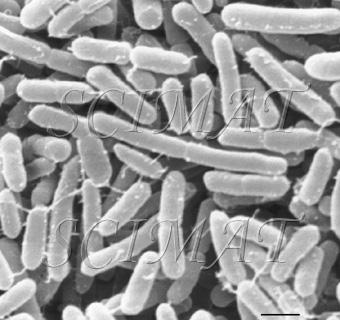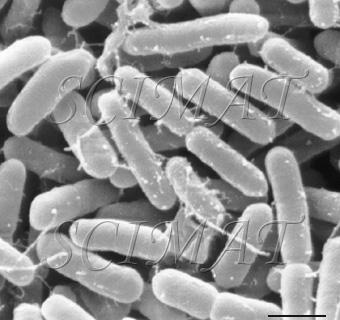|
(earlier Enterobacter sakazakii) |
 |
 |
| Bar: 1 µm | Bar: 1 µm |
Cronobacter sakazakii is the correct name for the bacterium, which was called Enterobacter sakazakii until 2007.
It is a motile, gram-negative, rod-shaped bacterium, first implicated in a case of neonatal meningitis in 1958, when an outbreak in England resulted in the deaths of 2 infants. Since that time, there have been approximately 70 reported cases of C. sakazakii infection. Although the incidence of C. sakazakii infection is low, the prognosis is poor, and the infection is associated with significant morbidity and mortality. The bacterium was found in infant formulas as a contaminant. It affects infants, the elderly, and any persons with compromised immunity. Specifically, it attacks the vascular system, the gastrointestinal system and the nervous system. Because of this hazard, a rapid method to detect the bacteria in baby formulas has been developed.
This bacterium was isolated from plant food and food ingredients such as cereals, fruits and vegetables, legumes, herbs, and spices as well as from animal food sources such as milk, meat and fish.
Dr. Jeff Farber, Director of the Bureau of Microbial Hazards,
Food Directorate, Health Products and Food Branch, Health Canada has published an extensive review with many illustrations and tables. "Should we be concerned with this bacterium?" he asks at the beginning. Based on the information compiled, his anwer is affirmative "yes".
When searching for this bacterium on the Internet, it is still being found under the old name Enterobacter sakazakii.
Additional links:
Infant infections associated with the use of powdered infant formula in 2001
Guidelines for preparation of infant formula - 2002
E. sakazakii fact sheet, where the bacteria may also be viewed in false colours.
The risks of infant formula feeding
Fourteen risks of formula feeding
For comments, please contact the author.
| Updated: March 11,
2013
©SCIMAT 2001-2013 |